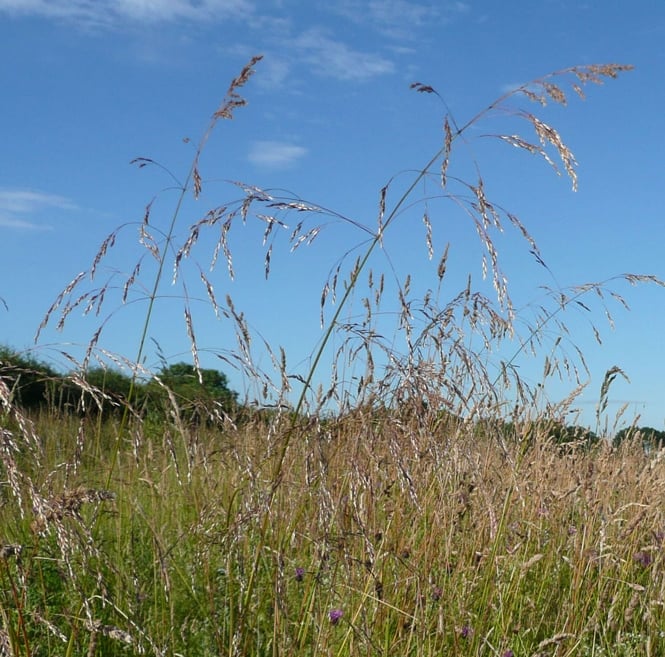Suggested Sowing Rates
50kg/ha 20kg/acre 5g/m2
Description
This mixture has been devised to create areas of tussocky grassland that, once established, requires little or no maintenance. This grassland type can form a good habitat for insects, small mammals, birds, amphibians and reptiles, providing nesting sites during spring, food during summer and autumn, and shelter during winter.
Ground Preparation
Ideally select ground that is not highly fertile and does not have a problem with perennial weeds (especially grass weeds like couch). Good preparation is essential to success so aim to control weeds and produce a good quality seed bed before sowing. To prepare a seed bed first remove weeds using repeated cultivation or a herbicide. Then plough or dig to bury the surface vegetation, harrow or rake to produce a medium tilth, and roll or tread to produce a firm surface.
Sowing
Seed is best sown in the autumn or spring but can be sown at other times of the year if there is sufficient warmth and moisture. The seed must be surface sown and can be applied by machine or broadcast by hand. To get an even distribution and avoid running out, divide the seed into two or more parts and sow in overlapping sections. Do not incorporate or cover the seed, but firm in with a roll, or by treading, to give good soil/seed contact.
First Year Management
Growth and establishment of wild grasses may be slow initially, especially at low sowing rates (2-5g/m2). There will often be a flush of annual weeds from the soil in the first growing season. This weed growth is easily controlled by topping or mowing. Mow all plant growth (sown grasses and weeds) regularly to 40-60mm throughout the first growing season to prevent weeds smothering the slower-growing grasses. Remove cuttings if dense, more frequent and regular topping will minimise the amount of toppings produced each time so they can be left to disperse.
Management Once Established
Once established, tussocky grassland requires minimal maintenance. Unwanted perennial weeds (docks, thistles) may need control by occasional spot treatment with a herbicide. To control scrub and bramble development, tussocky areas may need cutting every 2-3 years, between October and February. For wildlife this cutting is best done on a rotational basis so that no more than half the area is cut in any one year leaving part as an undisturbed refuge.
EG10 is a 100% grass seed mixture which can be sown alone or sown with wild flowers EM10F. EG10 is available premixed with these flowers as complete meadow mixture EM10. Generally when sowing EG10 grasses without wild flowers the sowing rate may be increased to 10-15g/m2 without compromising the development of diversity.


